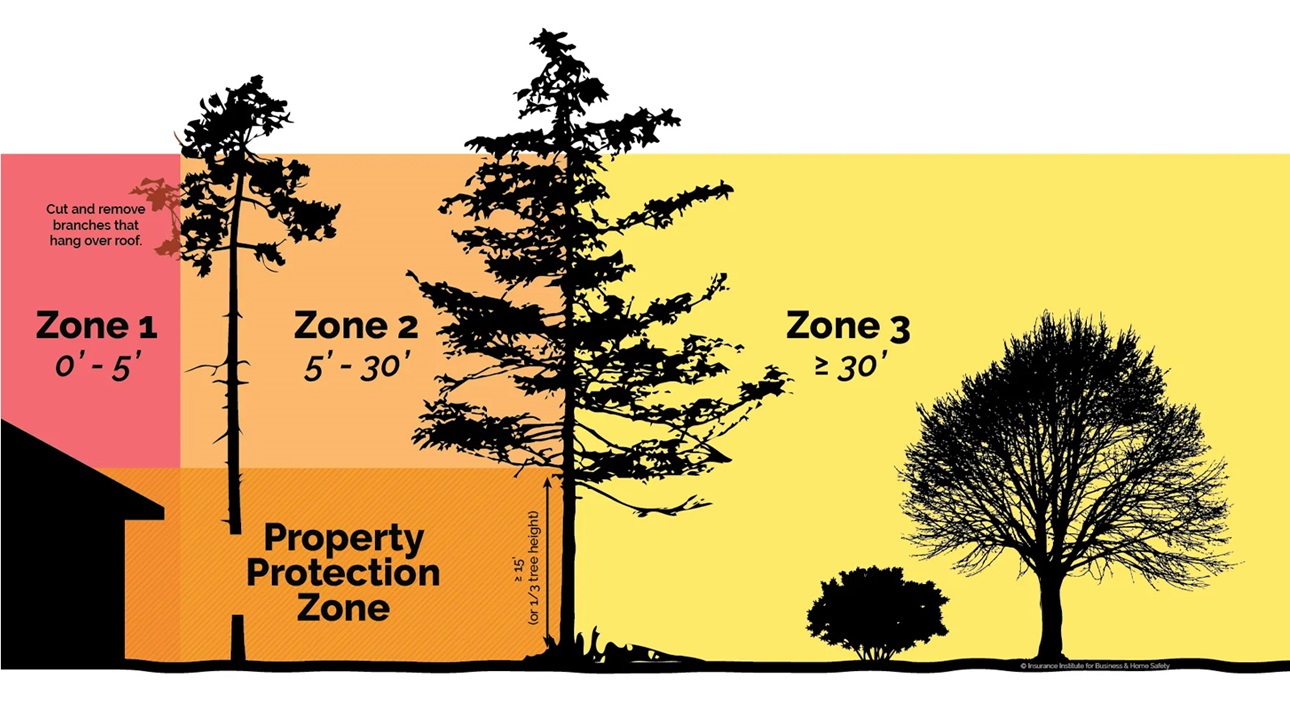2 Key Strategies to Reduce Home Wildfire Risk
All areas of the United States are vulnerable to one or more natural hazards — storms, earthquakes, floods, wildfires — but tend to be at higher risk for one or two. Understanding which hazards are a higher risk in your location is the first step to being prepared; no one ever wants to be out of his or her home because of a natural disaster, especially during this current public health crisis.
Summer is approaching, which is peak wildfire season for some. In addition, some areas of the country are currently experiencing drought conditions, which will increase the risk of wildfire.
There are two main types of strategies builders, remodelers and home owners can employ to minimize potential impact from wildfires:
- Maintaining a defensible space around the home to keep a fire, and
- Selecting building envelope materials and using construction techniques that can make it harder for the home to catch fire.
Defensible space encompasses three zones around the home. The goal of this strategy is to reduce the chance that embers will “jump” to a home and limit the opportunity for a fire to ignite close to the home. Strategically spacing vegetation and maintaining it regularly lessens the chance of exposure to direct flames.

Graphic by disastersafety.org
- Zone 1: 0-5 feet from the building (and under the deck)
Goal: Create a noncombustible zone by using hardscapes and not planting vegetation directly next to the home - Zone 2: 5-30 feet from the building or to the property line
Goal: Locate and maintain vegetation to keep fire from climbing up and reaching the home - Zone 3: 30-100 feet from the building or to the property line
Goal: Strategically locate vegetation to slow down and reduce the energy of the fire.
- Using noncombustible roofing and gutter materials
- Covering walls with fire-resistant materials such as brick, stone or stucco
- Screening attic and underfloor vents to keep embers out but still allow airflow
- Boxing in open eaves to create a soffited eave
- Installing dual- or multi-pane tempered windows with screens
- Encasing stilts so there is no opening below the floor, balcony or deck
- Sealing the garage door with weather stripping to help reduce ember entry
Check out disastersafety.org for additional information on building and maintenance to reduce risk from wildfire. The International Code Council also publishes the International Wildland-Urban Interface Code, which communities desiring to address wildfire risks on a jurisdiction-wide scale can adopt.
To stay current on the high-performance residential building sector, follow NAHB’s Sustainability and Green Building team on Twitter.
Latest from NAHBNow
Jul 03, 2025
Consumer Confidence Retreats in JuneAfter a strong rebound in May, consumer confidence resumed its downward trend in June. Consumers remain concerned about the economy and labor market amid ongoing uncertainty, especially around tariffs.
Jul 02, 2025
5 Proven Strategies Smart Builders Use to Grow in Any MarketSound Capital has worked with builders across market cycles for over 20 years. They have seen who thrived when others pulled back, and they've studied the strategies they used to scale while competitors were sidelined. Here are five things they all had in common.
Latest Economic News
Jul 03, 2025
Solid Job Growth in JuneThe U.S. labor market continued to show resilience in June, with steady job gains led by state/local government and health care sectors.
Jul 02, 2025
Two or More Story Home Starts Rebound in 2024Over half of new single-family homes built in 2024 were two or more stories, according the recent release of the Census Bureau’s Survey of Construction (SOC). After declining in 2023, the share of homes started with two or more stories increased again in 2024, continuing the upward trend in place since 2020.
Jul 01, 2025
May Private Residential Construction Spending DipsPrivate residential construction spending fell by 0.5% in May, marking the fifth straight month of decreases. This drop was primarily driven by reduced spending on single-family construction. Compared to a year ago, total spending was down 6.7%, as the housing sector continues to navigate the economic uncertainty stemming from ongoing tariff concerns and elevated mortgage rates.
